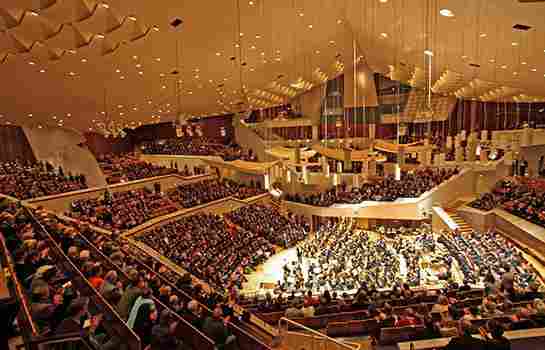Wim Wenders's 3-D short, The Berlin Philharmonic , shown this past weekend in New York as part of the Architecture and Design Film Festival, explores the construction of, and philosophy behind, the 50-year-old performance space. In an unusual twist, the narrator of the film is the building itself. “From the outside, I might not strike you as being so large,” a disembodied voice says. “But inside, I am wide open. The idea, or the utopia of an open society is reflected in me, like in a huge ship, that also enhances a collective principle in one space.”
The futuristic building was designed by architect Hans Scharoun to replace the orchestra’s previous home, which was destroyed in 1944 during a British bombing raid. Wenders’s sweeping shots show the complexity of Scharoun’s design, which has a tentlike façade that cloaks an expansive interior in two levels of roofs—an outer one encasing a second that, while less distinct, provides an important layer for creating a dynamic sound.

Each level and section of the Berlin Philharmonic is connected via walkways within the theater so that one can access every seat without having to exit the hall into the lobby. For Scharoun, this populist approach was representative of his hope for a society that could connect all walks of life. It was also Scharoun’s revolutionary idea to put the orchestra at the center of the auditorium (in a kind of theater-in-the-round arrangement) optimizing sound to reach every seat.
“Sometimes I feel he thought of me as an ocean liner,” explains the narrator. “That’s why [Scharoun] inserted portholes into my shelf and let a large ship’s bow expand into the space. I am the unsinkable Titanic of concert halls.”
